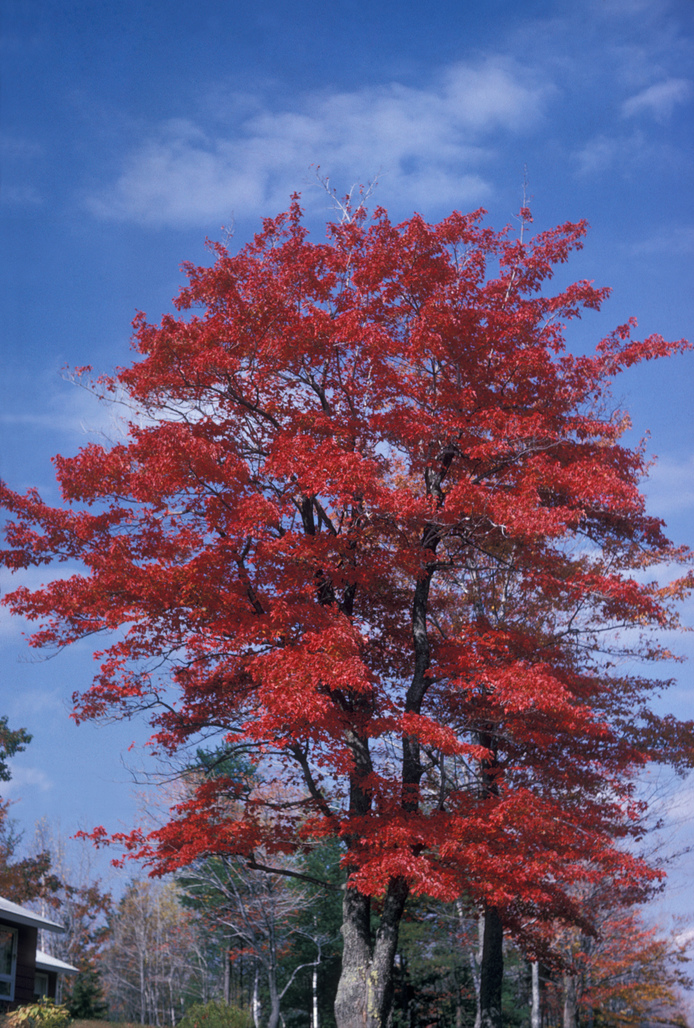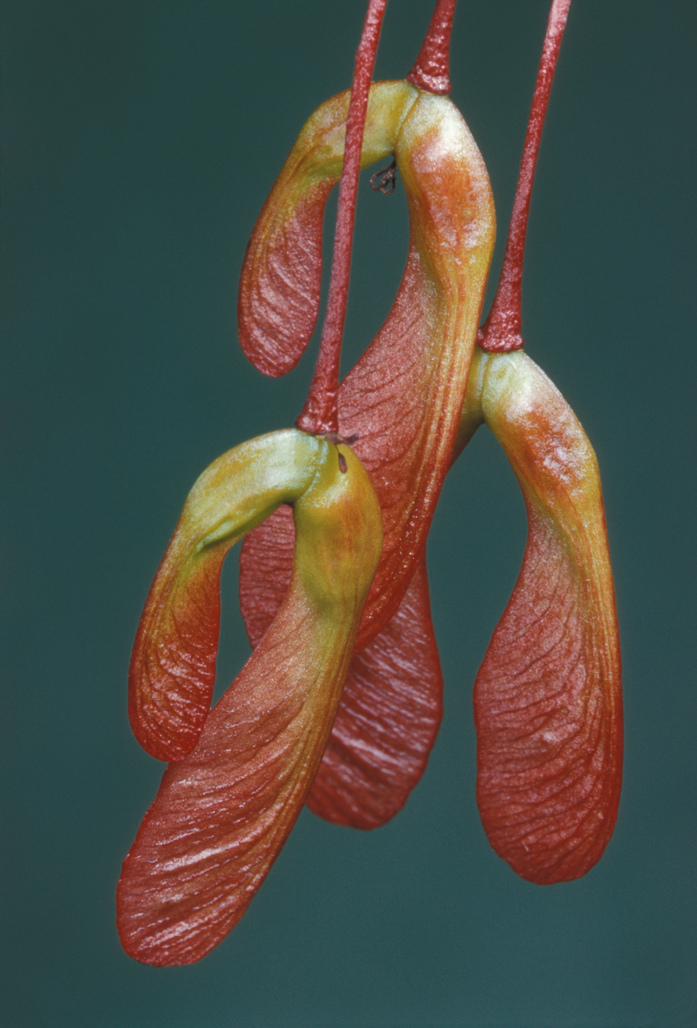General Description
Bloom Description: Flowers are bright red and discreet, emerging just before the red leaves unfurl.
Growth Habit & Shape: A single- to multi-trunked tree found throughout New England, this species tends to have a vase shape with an oval crown. New growth emerges deep red.
Soil Preferences: Often known as "swamp maple," it is commonly found in wet areas, but in cultivation it grows very well in average soils and upland sites when dressed with organically-rich soil. It will tolerate a very wide range of soils, from clay to sandy loam.
Root Description: Typically develops large, shallow surface roots as part of a generally fibrous root system; will raise sidewalks if planted as a street tree.
Garden Uses: Excellent as a shade tree, for wetland remediation and naturalizing.
Best Management & Maintenance: Red maple needs little attention once it becomes established. Water to get it through the first season, then let grow on. Pruning for shape is rarely needed. Maples form a thick root mat at the surface, so underplant with ferns and herbaceous species early in the maple's growth to help it retain moisture and to enable undergrowth plants to establish free of competition at the root level
Common Problems:
Biotic: no serious disease or pest problems typically, but tar spot is common in the fall, and verticillium occasionally attacks stressed individuals, invading the vascular system and killing the plant.
Abiotic: drought can be a problem when the tree is first establishing, and serious drought in subsequent years may cause stress.
"
Benefits
Ornamental Value: The red flowers, fruit and young twigs are very showy. The older bark is gray and rough. This is a nice specimen tree.
Wildlife Benefits: Young growth is a desirable browse food for ungulates such as deer and moose. This genus supports the life cycles of approximately 287 species of butterflies and moths.
Other Practical/Environmental Benefits: erosion control and soil stabilization, shade value.
Use in place of: Norway maple (Acer platanoides)
Ecology
Habitat:
Most often found in the wild on stream borders and low swamplands throughout Eastern North America, but in the more northerly portions of its range, as in New England, it is also found growing in diverse conditions including on alpine ridges, along sandy slopes, and in peat bogs.
Response to Disturbance: This species tolerates a very wide variety of conditions, reflecting its status as a sub-climactic species. In other words, in the wild, red maple seeds out readily, grows fast, and is among the second wave of woody plant species to dominate during an area's recovery from disturbance or clearcutting. It is not often found as an old-growth tree, as it is often out-competed by slower-growing species in the long term. It is generally intolerant of serious drought, but otherwise this species is reasonably resilient.
Native State Distributions:
Canada: BC, NB, NF, NS, ON, PE, QC
USA: AL, AR, CT, DC, DE, FL, GA, IA, IL, IN, KY, LA, MA, MD, ME, MI, MN, MO, MS, NC, NH, NJ, NY, OH, OK, PA, RI, SC, TN, TX, VA, VT, WI, WV
Wetland indicator status: FAC
References
Return to Top


